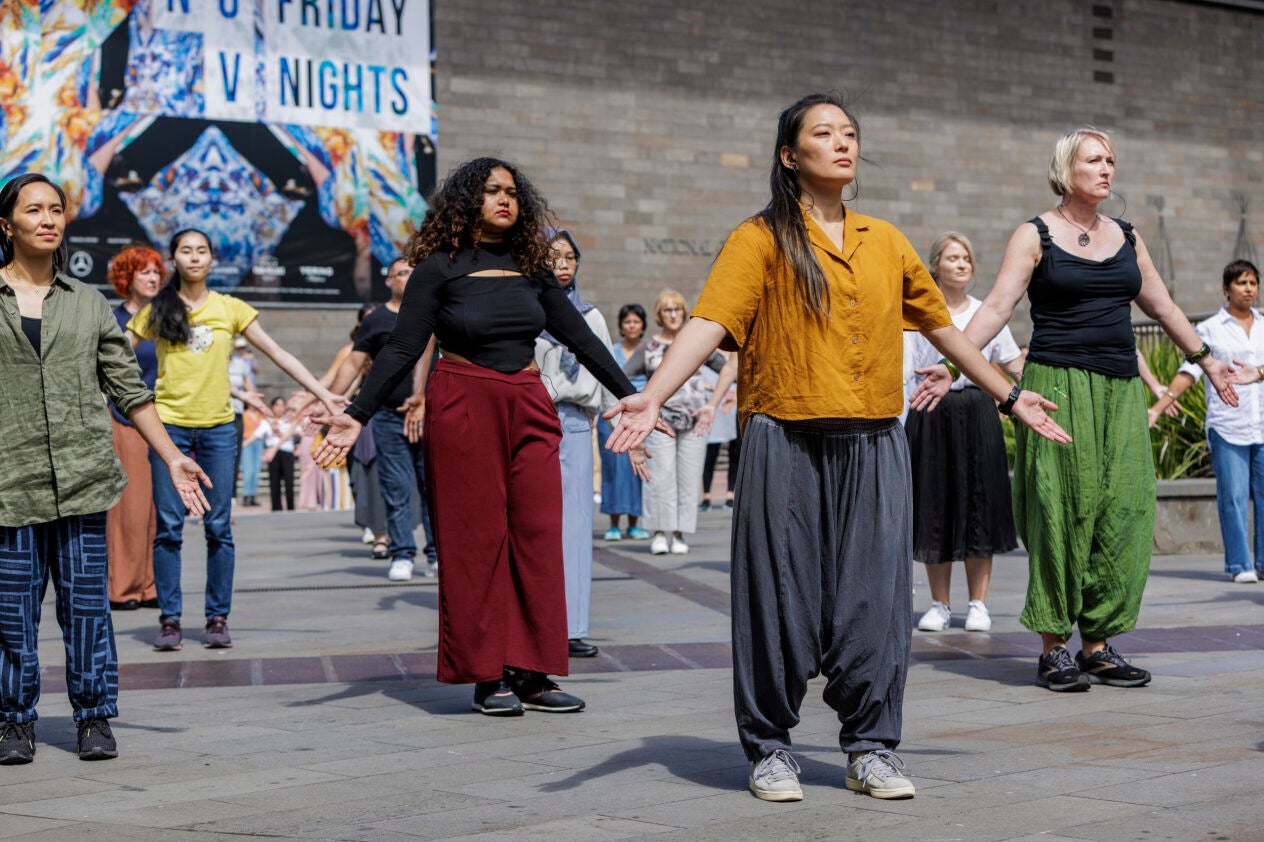Recent changes in have led to a collective sigh of relief in women’s gymnastics. No longer will competitive gymnasts be penalised for accidentally revealing their underwear while performing.
Author
Rachael Jefferson
Lecturer in Human Movement Studies (Health and PE) and Creative Arts, Charles Sturt University
Indeed, Gymnastics New Zealand (GNZ) has finally modernised its uniform rules, allowing girls and women to wear shorts or leggings over their leotards –
This decision was made following a survey of 200+ female competitive gymnasts, with GNZ concluding every gymnast should feel “” when performing. Prior to this, female gymnasts could have from their final score for unintentional dress code violations while in action.
Dress code pushbacks
This timely rule change builds on the past few years of global advocacy in which some sportswomen have voiced concerns about how their . It’s hardly surprising to hear this, since women’s sport uniforms have traditionally been , making some athletes uncomfortable.
Dress code pushbacks from female athletes led to worldwide outrage in July 2021, when Norway’s beach handball team instead of regulation bikini bottoms at a European Championship match.
The European Handball Federation officials claimed the shorts were “improper clothing” that defied the
A few months later in October, the IHF quietly modified its beach handball regulations, advising ““. Meanwhile, men’s shorts must be “not too baggy” and they can be longer than the women’s shorts as long as they “remain 10 centimetres above the kneecap”.
In 2021, there were also at the European Artistic Gymnastics Championships in Switzerland. German gymnasts donned full-body suits, in response to the ongoing objectification and sexualisation of women in sport.
Global sexual abuse of young gymnasts
It was no coincidence that the German gymnasts’ decision to cover up followed one of the – in the United States, 156 women gave testimonies at the 2018 sentence hearing for the former USA Gymnastics team doctor, Larry Nassar, who was jailed for up to 175 years. A proceeded in June 2020, detailing sexual abuse within USA Gymnastics and the failure of the sport to address this.
Other gymnasts were prompted to speak out across the world.
In the United Kingdom, exposed the they endured at the hands of their coaches. More than 400 submissions by traumatised UK gymnasts were subsequently , exposing widespread physical, emotional and sexual abuse by coaches.
In New Zealand, former Blenheim Gymnastics Club coach pleaded guilty in March 2024 to more than 60 sexual offence charges against girls under his tutelage.
Why do dress codes matter?
This is not just about dress codes, it’s about choice – when female athletes are given uniform choices, .
involving more than 3,000 girls across eight countries confirmed sports uniforms are an important influence on girls’ engagement in physical activity. If girls , it is possible to keep them active for longer.
Since , this is imperative for girls’ future health and wellbeing.
When young girls see by the media due to what they wear in sport, this often tells them women are valued for their bodies, rather than their athletic abilities.
Low self-esteem and can be seeded early on in a girl’s life, especially when puberty kicks in and This can lead to teenage girls developing a , and
Baby steps
None of this is a female issue – it’s a systemic issue.
Sex offenders in women’s gymnastics coaching circles, and archaic inappropriate dress codes for female athletes, confirm the patriarchy is alive and well in the institution of sport.
It’s all connected – girls and women participate in a that has pervasive and enduring gender inequities.
A culture of fear and silence has persisted for too long in women’s sport. But when predators are punished, and uniform policies are reformed, this indicates changes are afoot.
The ripple effect may become a tidal wave if female athletes are listened to, and systemic change will surely follow.
Yes, there’s a long and winding road ahead, but every little knicker and bra strap policy amendment paves the way for improved gender equity in the old boys’ club.
![]()
Rachael Jefferson does not work for, consult, own shares in or receive funding from any company or organisation that would benefit from this article, and has disclosed no relevant affiliations beyond their academic appointment.








